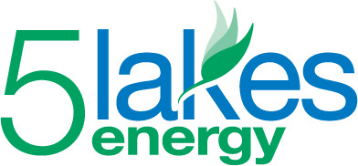by Skip Pruss
We got a glimpse this month of Gov. Rick Snyder’s view of renewable energy in Michigan.
Signaling likely opposition to the new proposed ballot initiative that would require 25% of Michigan’s electricity to be derived from renewable sources by 2025, the governor said during a visit to Port Huron that “Michigan is not necessarily a very good renewable state for wind or solar, relative to some of the states out west or in other parts of the country.”
Michigan’s present clean energy standard requires 10% of our electricity to come from clean energy sources by 2015 — the lowest requirement among the 29 states that have mandated clean energy standards.
While it’s true that there are areas within the U.S. that have more wind and solar energy potential than Michigan, any implication that developing Michigan’s clean energy resources would be economically inefficient is plainly wrong.
Wind and solar energy in Michigan are proving to be highly efficient, money-saving energy choices for Michigan consumers. In fact, the cost of deploying these energy technologies is far less than anyone anticipated, especially our utilities.
Consumers Energy has adjusted the charge for renewable energy steadily downward — from $2.50 per month for residential ratepayers down to $0.65 per month and then down again to $0.52 cents per month. DTE has also acknowledged that wind energy is much less expensive than anticipated.
Validating the cost effectiveness of clean energy, the Michigan Public Service Commission has determine that wind energy in Michigan costs about 40% less than energy from a new coal plant.
This is because innovation has led to dramatic improvements in wind and solar technologies, lowering costs and improving the economics — a trend that will continue. And because they don’t burn fossil fuels, there is zero threat of volatile or escalating fuel costs ratcheting up utility bills.
Meanwhile recent electricity costs are up 13.5% for DTE Energy customers and $4.28 per month more for Consumers Energy’s residential customers (using an average of 500 kilowatt hours of electricity per month). These increasing costs are largely attributable to the escalating cost of coal and coal transport — given the fact Michigan utilities import 100% of the coal they burn — and needed environmental upgrades to aging 20th Century infrastructure.
Gov. Snyder needs to take an energy lesson from Germany, an automobile manufacturing country with a highly skilled, unionized labor force similar to Michigan’s. Germany backed renewable energy policies aggressively and now gets 17% of its electricity from clean energy sources, with targets of 35% in 2030 and 80% by 2050. The result: 382,000 new jobs in thriving clean energy technology sector and a projected 600,000 jobs by 2020.
One would think that because Germany lies, on average, 400 miles farther north than Michigan, it might not necessarily be a very good place for solar energy. Yet Germany has deployed 6 times as much solar energy (25 gigawatts) as the entire U.S. (4.2 gigawatts) and has a vibrant wind sector as well.
Like Michigan, Germany is a leader in industrial innovation, advanced manufacturing and engineering. The difference is that Germany uses its strengths to build manufacturing capacity and seize market opportunities in the burgeoning, trillion-dollar global clean energy economy.
Acknowledgement that energy economics are shifting rapidly in favor of cost-effective clean energy technologies should be the foundation for forward-looking energy policies. If Gov. Snyder relies on facts and data, he’ll support policies that play to Michigan’s strengths and future opportunities.
